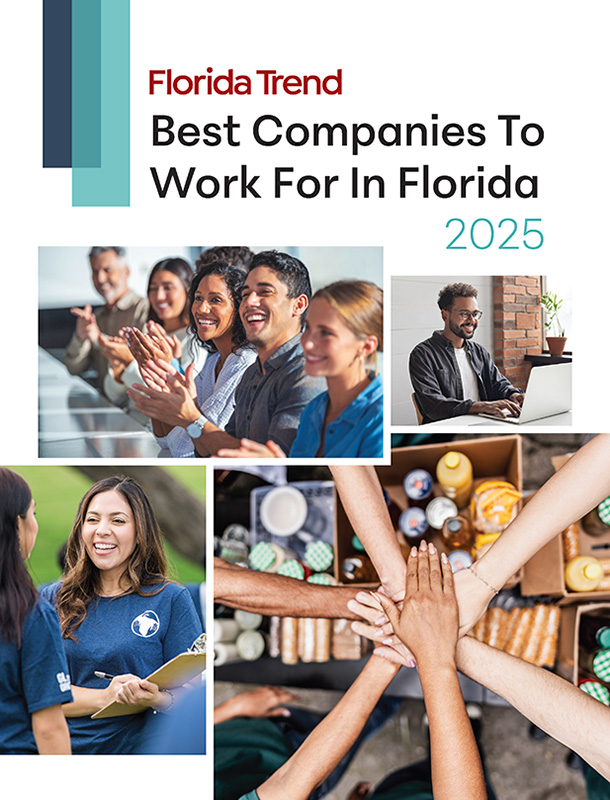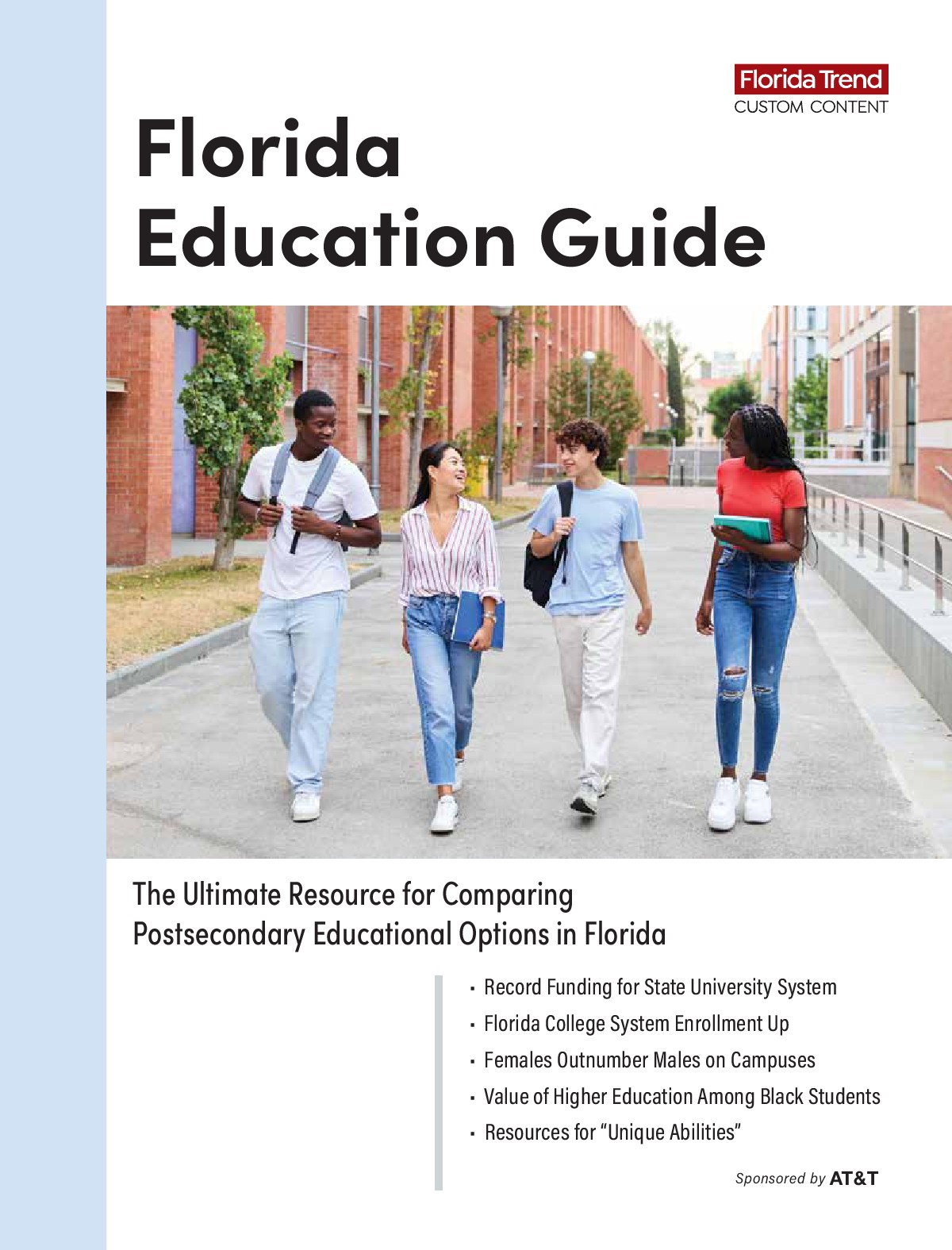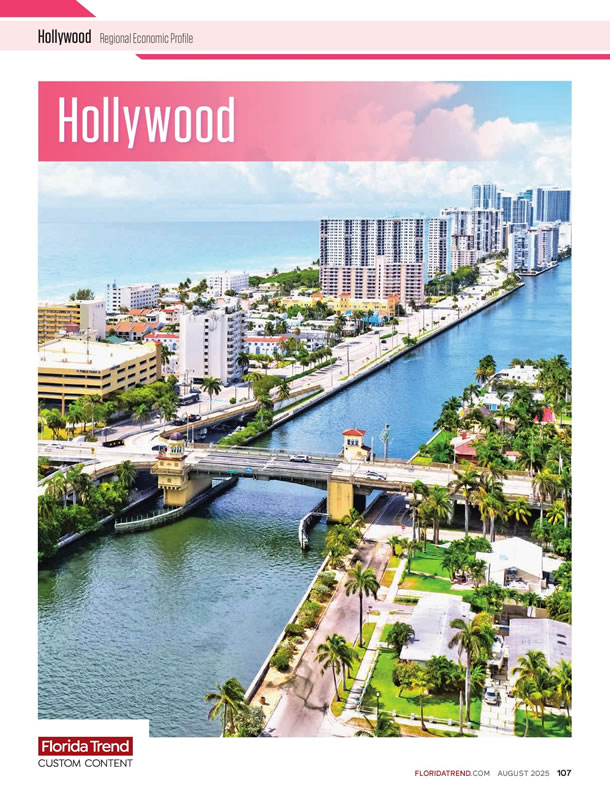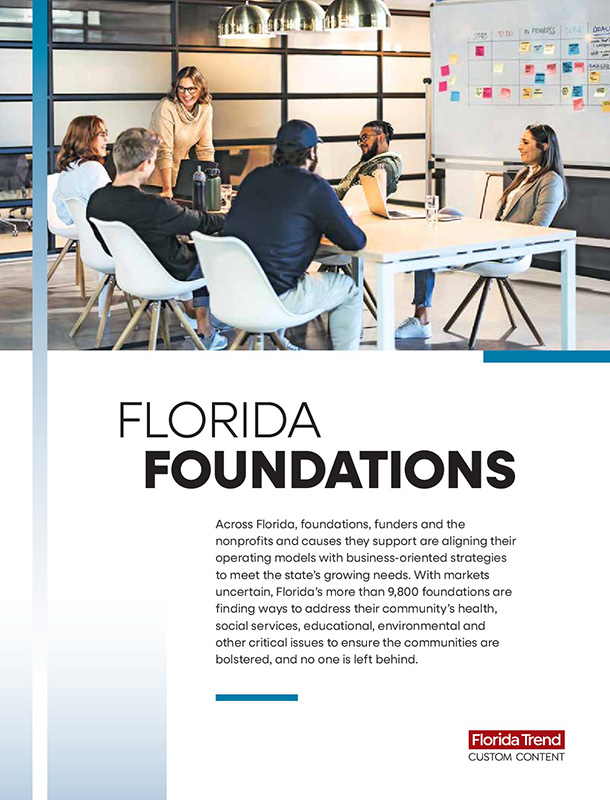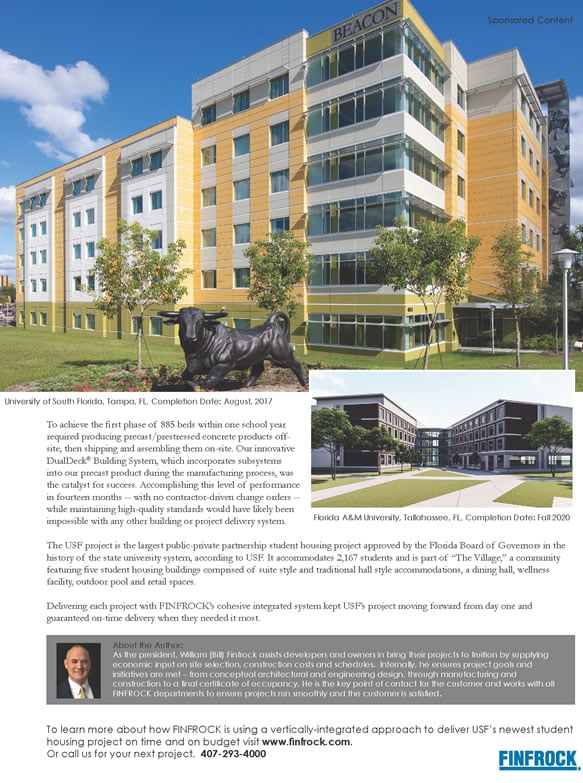 The Herráns, from left,: Jose Jr., COO and head buyer; Agustin, president and CEO; and Javier, director of marketing and IT chief. Their Sedano’s supermarket chain, the fourth-biggest in the Miami-Fort Lauderdale area, employs 2,600 and expects revenue of more than $400 million this year. [Photo: Eileen Escarda] |
Walking through their family’s newest supermarket in west Miami, cousins Jose Herrán Jr. and Javier Herrán point out the differences between the new Sedano’s prototype and older Sedano’s stores — higher ceilings, wider aisles, brighter lighting, more convenience. They zero in on the products and services they say differentiate Sedano’s from its competition for Hispanic consumers — the fish selection, the custom-cuts meat department, the abundance of Hispanic groceries, from maltas to bulk rice to Cuban crackers. The Herráns stop at an aisle with 24 feet of shelf space dedicated to customers from Central America, pointing out jars of potatoes, bags of purple corn flour and pea flour. More products appealing to non-Cuban Hispanics are coming.
What's Different Custom-cut meat department:
Maltas, non-alcoholic,
brewed soft drinks: |
“You probably won’t see too much of this anywhere in the market. We get more and more every day,” Chief Operating Officer Jose Herrán Jr. says. “We cater to everybody.”
For the new generation of Herráns, the stakes are as high as the new store’s ceiling as they try to capture the hearts of younger Cubans and masses of new immigrants from Central and South America and the Caribbean.
Battered by competition from everyone from convenience stores to Wal-Mart super centers, supermarket industry revenues in constant dollars have grown just 1.1% since 2004 and are projected to grow only 1.3% in the next five years, says senior analyst George Van Horn, of Los Angeles-based business intelligence firm IBISWorld. The competitive pressures that supermarkets have been under recently will only intensify, Van Horn says.
In the 46 years since Cuban immigrant Armando Guerra bought a small grocery store in Hialeah from a man named Sedano, the Guerra and Herrán families have built a family success story in south Florida. Manuel Herrán, who married Guerra’s niece, and his brothers Jose Sr., Ezequiel and Antolin built the chain. Herráns and Guerras are prominent in business, law, real estate and banking. Their 2,600-employee Sedano’s chain expects to post $413 million in revenue this year and ranks fourth in market share in the Miami-Fort Lauderdale area. With 3.2% of the market, Sedano’s trails Publix, the runaway leader with 51% (and 68 stores in Miami-Dade alone), Winn-Dixie (17%) and Wal-Mart (12%), according to industry watcher Progressive Grocer.
 [Photos: Above, Alex Gort Jr. Below, Eileen Escarda]      |
Sedano’s success at locations abandoned by Winn-Dixie and Albertson’s testifies to the chain’s ability to cater to Hispanic tastes with specialized goods and low-priced staples. Sedano’s, for instance, hasn’t raised its milk price above $3.49 per gallon for two years, while Publix milk reached $4.69 per gallon before it cut the price to $3.59 this year as part of its “essentials” promotion. Sedano’s presses its vendors to keep their prices low, though sometimes the staples become loss leaders.
The Herráns also have been conservative, growing only with reinvested profits. The chain now has 25 stores in Miami-Dade, four in Broward and one in Palm Beach, including the still profitable 5,000-sq.-ft. store in Hialeah where the chain began. But that conservative approach also means their new prototype in west Miami is arriving as the fourth supermarket in the area, with a Publix, Winn-Dixie and an independent already doing business there. Only last year did Sedano’s launch its own private label — typically more profitable than branded goods for supermarkets — and the line is up to just 25 items.
As competitors for Hispanics pile in to pursue one of the few growth markets for supermarkets — Publix opened its second Hispanic-oriented Sabor store in Miami-Dade in October — Sedano’s is looking for a new marketing approach.
“ ‘It’s where your mom shops’ — we maybe have that image,” Javier Herrán acknowledges somewhat reluctantly. The 32-year-old says he has noticed Publix products in friends’ homes. “It was pretty obvious to us. We are that second generation. It’s obvious that’s the people we need to target.”
That second generation now is coming to the fore. Manuel Herrán and Jose Sr. remain chairmen, and Ezequiel continues as vice president of store development. But Manuel’s son Agustin is president and CEO, Jose Jr. is COO and head buyer, and Javier is director of marketing and heads IT. Other second-generation family members work as store managers and supervisors and as controller.
This year, Sedano’s replaced its longtime ad agency, SiboneyUSA, with Miami advertising and public relations agency República, which also works for Burger King and PepsiCo, among others, to create a new media thrust for its annual $3 million in advertising. And it remodeled one store, is remodeling five others and opened its new store in September.
 Sedano’s supermarket shoppers [Photo: Alex Gort Jr.] |
The new store’s market area, where Javier Herrán happens to live, says something about the changing demographics Sedano’s faces. The largest demographic group in the market area is still Cuban, but the second- and third-largest are Colombian and Venezuelan. Then, while the store is on Southwest 8th Street, it is so far in the western suburbs — far from the heart of Little Havana on Calle Ocho — that the Herráns expect to see Hispanic shoppers coming across from Naples.
| “A company like Sedano’s is benefiting today because they are tailoring their assortment, service and atmosphere all to uniquely fit and make the Hispanic consumer more comfortable.” — consultant Bill Bishop |
What shoppers will find in the 37,000-sq.-ft. prototype are many of the innovations that all supermarkets are using to try to lure customers. Case in point: A large prepared foods section, “the light at the end of the tunnel for a lot of these chains,” says Wade Hanson, senior manager with Chicago-based food industry consultant Technomic. Prepared food sales, which carry fatter margins than groceries, are growing twice as fast as restaurant sales, he says, and are allowing supermarkets to recapture consumer spending lost to eateries.
Shoppers also will find 18 of 66 freezer cases stocked with familiar foods from their place of origin or homes — the yucca fries, frozen green banana dough, pigeon peas and other items on which Sedano’s should be able to capitalize. Bigger supermarket chains often miss nuances of product quality, quantity or pricing in such segments, says consultant Bill Bishop of Willard Bishop in Barrington, Ill. “A company like Sedano’s is benefiting today because they are tailoring their assortment, service and atmosphere all to uniquely fit and make the Hispanic consumer more comfortable,” Bishop says.
Indeed, you can tell a south Florida neighborhood’s demographics by the local Sedano’s product mix — lots of Caribbean island specialties in North Lauderdale, 32 feet of shelf space for Mexican items in Homestead.
The Herráns seem confident in their ability to reach consumers in the changing market. Same-store sales are up 6%, Jose Herrán Jr. says.
“I always say you can’t be something you’re not,” he says. “We’re Hispanic. We know what the consumers are looking for.”
Miami-Dade Makeup
Miami-Fort Lauderdale led the nation’s 20 largest metros in the percentage of population that speaks Spanish at home, 38%. Sixty-two percent of Miami-Dade’s 2.4 million residents are Hispanic. Among the 2.4 million residents:
33% are Cuban
23% are Hispanics from other countries
4% are Puerto Rican
2% are Mexican
Source: U.S. Census



